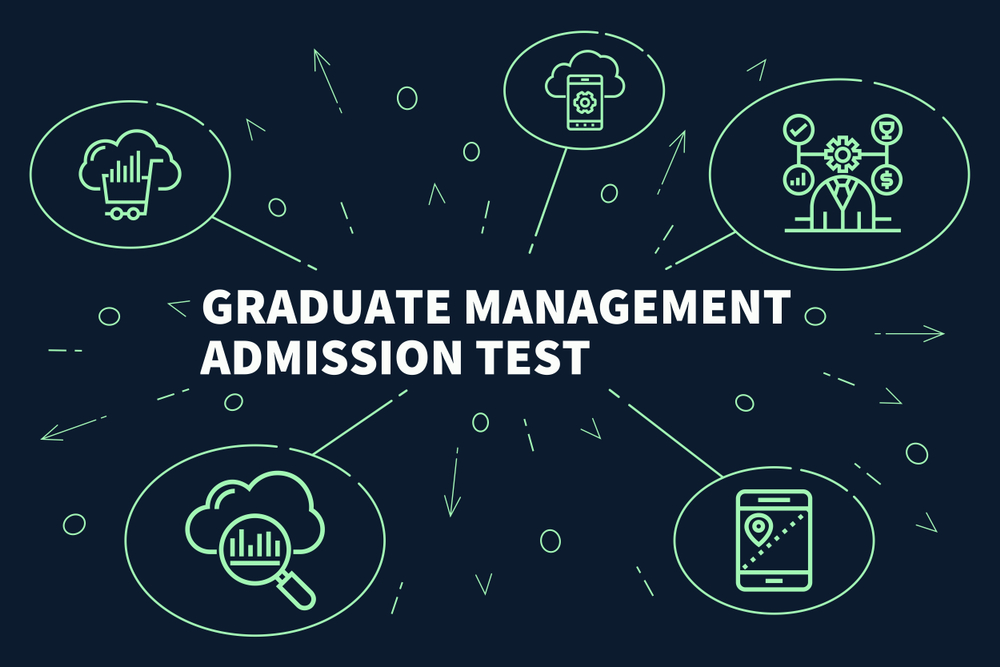L'Oréal Brandstorm 2026
Everything you need to know about GMAT

The GMAT score is also accepted by colleges offering One Year MBA programs. Applicants in India considering to opt for admission to leading B-Schools like ISB, XLRI, IIM Calcutta, IIM Ahmedabad, IIM Bangalore and others can sit for GMAT too. Lasting for around 3 hours and 7 minutes, the exam is designed in a way which accommodates two 8 minutes break, both of which are optional. Sub-divided into four sections, the GMAT paper consists of Integrated Reasoning, Verbal Reasoning, Analytical Writing Assessment and Quantitative Reasoning.
Available throughout the year, candidates can choose the dates and sit for GMAT as per their convenience. If in case a particular candidate is not satisfied with his/her score, they can appear for the test again.
The MBA aspirants in India can apply to the following management programs with their GMAT scores:
- International:
- Masters in Management programs
- MBA
- In India
- One year MBA at ISB, IIMs, XLRI, SPJIMR, Great Lakes
- Two Year MBA in India at more than 100 B-schools/Universities
GMAT: Exam Pattern
With a specific time limit for each, the GMAT paper consists of four sections. You aren’t allowed to switch between sections. The test is curated to test your higher-order reasoning skills. The basic skills tested by GMAT are English language and Maths. The test judges your mettle on grounds of reasoning and thus involves reasoning in all sections, including the sections of Integrated Reasoning and Analytical Writing Assessment (AWA). It primarily tests your speed of reasoning and quality and not mere knowledge of formulae and academics.
The exam is computer-adaptive which refers to the fact that the level of difficulty of questions depends on your response to the previous question. If you answer correctly to the given question, the next question you’ll see will be more difficult than the one you just answered. Similarly, if your answer is incorrect, the next question displayed will be less difficult. The overall score depends on the level of difficulty of questions you attempt correctly.
Key details
For the first timers, here are a few details which will help in giving you an insight of what GMAT entails:
- The registration fee is around US $250, which is approximately INR 17,500.
- Top international B-Schools have a longer admission cycle which lasts around 18-24 months. Thus, preparing in advance and staying determined is the key.
- Around 30,000 students in India appear for GMAT every year.
- Globally, around 2,00,000 students sit for the test.
- The average GMAT score is 583.
- The maximum GMAT score is 800 out of which a score above 700 is considered good, both in the country and abroad.
GMAT scores for top institutes
The following table will give you a rough idea about the scores you need to get in order to get admission into the top institutes abroad.
| Institute | GMAT Score 2017 |
| Stanford GSB | 737 |
| Northwestern (Kellogg) | 732 |
| Penn (Wharton) | 730 |
| Chicago (Booth) | 730 |
| Harvard Business School | 729 |
| Yale SOM | 727 |
| UC-Berkeley (Haas) | 725 |
| Columbia | 724 |
| MIT (Sloan) | 722 |
| Dartmouth (Tuck) | 722 |
To get admission into the top institutes in India, you can refer to the following list. We’ve also mentioned the list of programs you can get into, via the GMAT score.
| Institute | Program | Average GMAT Score |
| IIM Bangalore | Executive Post Graduate Programme (EPGP) - One Year Full Time Executive MBA | 709 |
| ISB Mohali and Hyderabad | Post Graduate Programme in Management (PGP) | 709 |
| IIM Ahmedabad | PGPX - Post Graduate Programme in Management for Executives: One Year Full Time Executive MBA | 700 |
| SPJIMR | PGPM (15 Months Programme) | 700 |
| XLRI Jamshedpur | PGDM (General Management) - 15 Months Programme | 700 |
| Great Lakes Institute of Management, Chennai | PGPM (15 Months Programme) | 600 |
Refer to the following article to get a better idea of why you must give GMAT. Get ready and spread your wings. This is your time to fly!
Login to continue reading
And access exclusive content, personalized recommendations, and career-boosting opportunities.
Don't have an account? Sign up
















Comments
Add comment